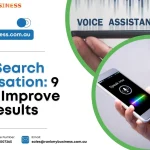
Let’s be honest. The word “sales” can leave a bad taste in your mouth. It conjures images of pushy tactics, inflated promises, and a relentless focus on the bottom line. For a brand built on values—on sustainability, fairness, and genuine impact—that old-school approach doesn’t just feel icky; it’s a direct contradiction to your mission.
But here’s the deal: you can’t make a difference if you don’t make a sale. The challenge, then, is to reframe the entire process. Ethical sales isn’t an oxymoron. It’s the art of aligning your commercial goals with your core values, creating a revenue engine powered by transparency and mutual respect. It’s about building a community of advocates, not just a list of customers.
What Exactly is an Ethical Sales Funnel?
Think of your sales funnel not as a trap, but as a guided journey. A well-lit path. You’re not hustling people toward a purchase; you’re providing them with the information, stories, and trust signals they need to make a confident decision that aligns with their own values. The entire process should feel helpful, not high-pressure.
The Pillars of an Ethical Funnel
This isn’t about a single tactic. It’s a foundation built on a few key principles:
- Transparency as Default: You openly share your pricing, your sourcing, your successes, and even your stumbles.
- Education Over Persuasion: Your goal is to inform, not to convince. You provide the “why” behind your product.
- Empathy in Action: You listen to your community’s concerns and aspirations. You solve real problems, not just sell stuff.
- Empowerment, Not Obligation: You give customers the space to choose what’s right for them, with zero guilt-tripping.
Practical Ethical Sales Strategies You Can Implement Now
Okay, enough theory. Let’s get into the nitty-gritty. How does this look in your day-to-day marketing and sales efforts?
1. Lead with Radical Transparency
Customers today are detectives. They read the fine print. They want to know exactly what they’re buying into. So, beat them to it. Share your manufacturing costs. Name your factory partners and show their conditions. Create a “deconstructed cost” page that explains why your $48 t-shirt costs what it does.
Patagonia’s “Footprint Chronicles” is the gold standard here, but you don’t need their budget. A simple, candid “About Our Materials” page with photos and stories of your suppliers builds immense trust. It turns a potential point of skepticism into a powerful selling point.
2. Educate with Authentic Storytelling
People don’t buy recycled sneakers; they buy the story of plastic bottles being rescued from the ocean. They don’t buy fair-trade coffee; they buy the story of a farmer’s family being sent to school. Your job is to be the bridge between that raw material and that human outcome.
Use your blog, your Instagram captions, your emails—all of it—to teach. Explain sustainable manufacturing processes in simple terms. Talk about the challenges of ethical sourcing. When you educate, you empower. And empowered customers become loyal ones.
3. Build Community, Not Just an Audience
A conscious brand’s most powerful salespeople aren’t on the payroll; they’re in the comments. Foster a genuine community where people can connect over shared values. Host virtual events or workshops about your mission. Create a user-generated content campaign that celebrates how customers use your products in their own conscious journeys.
This shifts the dynamic from “brand vs. consumer” to “us, together.” The sales happen naturally within that ecosystem of trust.
4. Price Fairly and Explain Why
Sure, you could undercut the competition by cutting corners. But you don’t. Your price reflects a living wage, quality materials, and a lighter environmental footprint. Don’t hide from this; lean into it. A clear, honest explanation of your pricing defends against sticker shock and reinforces your brand’s integrity.
| Conventional Brand Price | Your Ethical Brand Price | The “Why” Behind the Difference |
| $20 | $55 | Includes certified living wages for artisans, GOTS-certified organic cotton, and carbon-neutral shipping. |
A table like this isn’t an apology; it’s a statement of value.
5. Create a No-Pressure, High-Service Buying Experience
Ditch the fake scarcity (“Only 3 left!”) and the aggressive countdown timers. Instead, invest in incredible customer service. Have a generous, no-questions-asked return policy. Offer detailed product consultations. Make your checkout process a breeze.
When you remove the pressure, you build immense goodwill. People remember how you made them feel, and a smooth, respectful transaction is a surprisingly powerful differentiator.
What to Avoid: The Greenwashing Trap
As you craft your ethical sales strategies for conscious consumer brands, it’s just as important to know what not to do. The quickest way to destroy trust is to fall into greenwashing—making vague, unsubstantiated claims about your environmental or social benefits.
Avoid these pitfalls:
- Vague Language: Words like “eco-friendly” or “all-natural” are meaningless without proof.
- Emphasizing One Green Attribute: …while ignoring a larger harmful impact (like packaging a “natural” product in single-use plastic).
- Misleading Imagery: Using lots of green and brown and pictures of leaves on a product that isn’t actually sustainable.
Honestly, consumers are savvier than ever. They’ll call you out. It’s better to be humble and honest about where you’re still improving than to make a claim you can’t fully back up.
The Long Game: Trust as Your Most Valuable Asset
In the end, ethical sales is a long-term strategy. It might feel slower than running a flash sale or using aggressive pop-ups. But what you’re building is more durable than any quarterly revenue target. You’re building trust.
And in a noisy, skeptical market, trust isn’t just a nice-to-have. It’s the ultimate currency. It’s the quiet understanding that a purchase from your brand is a vote for a better world. That’s a story worth telling, and a sale worth making.




